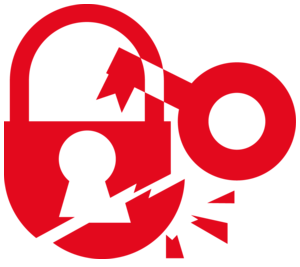Microsoft released fixes on Tuesday to plug critical security holes in Windows and other software. The company issued 13 patches to tackle dozens of vulnerabilities, including a much-hyped “Badlock” file-sharing bug that appears ripe for exploitation. Also, Adobe updated its Flash Player release to address at least two-dozen flaws — in addition to the zero-day vulnerability Adobe patched last week.

Source: badlock.org
The Windows patch that seems to be getting the most attention this month remedies seven vulnerabilities in Samba, a service used to manage file and print services across networks and multiple operating systems. This may sound innocuous enough, but attackers who gain access to private or corporate network could use these flaws to intercept traffic, view or modify user passwords, or shut down critical services.
According to badlock.org, a Web site set up to disseminate information about the widespread nature of the threat that this vulnerability poses, we are likely to see active exploitation of the Samba vulnerabilities soon.
Two of the Microsoft patches address flaws that were disclosed prior to Patch Tuesday. One of them is included in a bundle of fixes for Internet Explorer. A critical update for the Microsoft Graphics Component targets four vulnerabilities, two of which have been detected already in exploits in the wild, according to Chris Goettl at security vendor Shavlik.
Just a reminder: If you use Windows and haven’t yet taken advantage of the Enhanced Mitigation Experience Toolkit, a.k.a. “EMET,” you should definitely consider it. I describe the basic features and benefits of running EMET in this blog post from 2014 (yes, it’s time to revisit EMET in a future post), but the gist of it is that EMET helps block or blunt exploits against known and unknown Windows vulnerabilities and flaws in third-party applications that run on top of Windows. The latest version, v. 5.5, is available here.
 On Friday, Adobe released an emergency update for Flash Player to fix a vulnerability that is being actively exploited in the wild and used to foist malware (such as ransomware). Adobe updated its advisory for that release to include fixes for 23 additional flaws.
On Friday, Adobe released an emergency update for Flash Player to fix a vulnerability that is being actively exploited in the wild and used to foist malware (such as ransomware). Adobe updated its advisory for that release to include fixes for 23 additional flaws.
As I noted in last week’s piece on the emergency Flash Patch, most users are better off hobbling or removing Flash altogether. I’ve got more on that approach (as well as slightly less radical solutions ) in A Month Without Adobe Flash Player.
If you choose to update, please do it today. The most recent version for Mac and Windows users is 21.0.0.213, and should be available from the Flash home page. Windows users who browse the Web with anything other than Internet Explorer may need to apply this patch twice, once with IE and again using the alternative browser (Firefox, Opera, e.g.). Chrome and IE should auto-install the latest Flash version on browser restart (I had to manually restart Chrome to get the latest Flash version).
Source: Krebs
